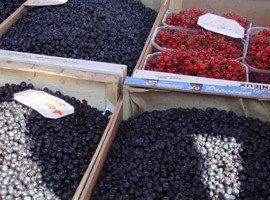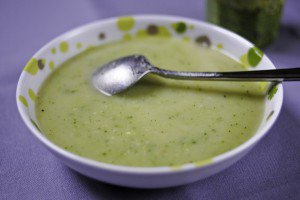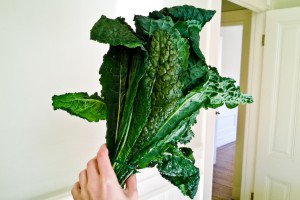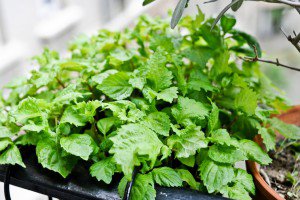
Last Saturday I went to the Marché des Batignolles, an all-organic market that’s just a short bus ride from where I live. I don’t go nearly as often as I’d wish: many different activities compete for my attention on Saturday mornings, and the whole sleep-in-and-laze-around-in-your-pj’s seems to win the game more often than not, especially when Friday nights are poker nights.
However, this time I had a companion, Meg, who lives not too far from me: she had never been to that market so we had agreed to meet for a little team-shopping. And just like having a workout buddy will ensure you don’t skip your exercising sessions, this was an excellent motivation to actually get up, get dressed and walk out into the bright but chilly morning, my little shopping bag in tow.
We bought plenty of fruits and vegetables from my usual produce stall — I got carrots, spring onions, green beans, shelling beans, wild roquette, apples, and delicious reine-claudes (green plums) the size of mirabelles (marble-sized yellow plums) — but we also made a stop at a much smaller stand that sold intriguing and unusual produce.
When we got there a middle-aged man was poring over the selection and I overheard him say, “Vous avez vraiment plein de trucs bizarres qu’on voit jamais.” (You really have weird things that nobody else sells.) The way he said it, nonplussed and slightly dubious, did not make it sound like a compliment — he walked away without purchasing anything. The lady seemed pleased to discover such excited expressions on her next customers’ faces.
Most of the display was occupied by a wide and colorful array of winter squash, in varieties that are very difficult to find in Paris: butternut squash, acorn squash, spaghetti squash, and lots of others to whom I’ve yet to be introduced, including really small ones that would make remarkably pretty decorations for a mantelpiece if I had one on hand. But to be truthful I am not the world’s biggest fan of winter squash, and my eye was drawn to other things.
First, a basket of small yellow and green tomatoes wrapped in their fragile leaf-cloaks. Tomatillos?, I asked. Yes, tomatillos!, the lady replied — we did actually form complete sentences a bit later in the conversation. I had never seen a tomatillo in the flesh before, only in picture books (okay, magazines and websites), but I knew it to be a capital ingredient in Mexican cuisine and I just had to buy a handful. Now of course they’re all huddled together in the refrigerator and I’m not sure what to do with them. A salsa maybe?
Then, I spotted a super spiky little green thing that looked like a cross between a hand grenade and a medieval flail. This, I was told, was a Peruvian cucumber whose exact name eludes me now (I believe it had an “n” and a “w” and three syllables — I’m sure that helps). It’s not every day that one can purchase a vegetable that also functions as a weapon, so I couldn’t pass it up. We ate it for lunch that same day and loved it: you have to cut it in halves and eat it with a spoon like a melon, taking care not to prick your fingers (unless pricking your fingers is, in fact, your thing). The flesh is juicy with large edible seeds, and it tastes like (you guessed) cucumber, but with a lovely lime juice taste. Fun and refreshing.
Finally, I was delighted when the lady mentioned that she had fresh piment d’Espelette stashed in the back. This emblematic chili pepper from the Pays Basque is protected by an AOC (a certification of origin) since 1999 and proves pretty difficult to find outside its natural habitat, probably because it’s produced on such a limited scale. It’s easy enough to find in powder, flake or jelly form (got them all), but whole — fresh or dried, I’m not picky — is another story. So I bought one, and it is now biding its time with the tomatillos. I will use it in some kind of stew or possibly with the tomatillos, or maybe I will hang it somewhere in the kitchen and let it dry and be pretty — we shall see!













